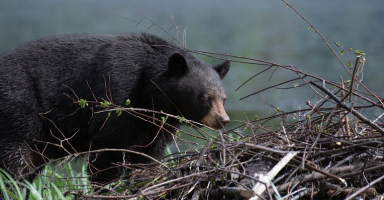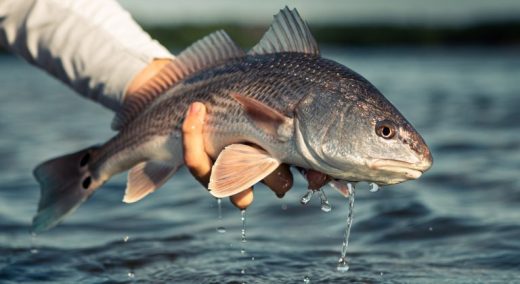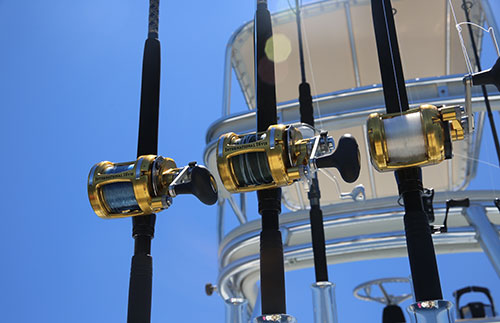When the Air Turns Crisp: Preparing for Cooler Weather Inshore Fishing
There’s a moment every fall along the Carolina coast when the breeze shifts. It’s subtle at first — a cooler breath rolling off the marsh, a change in how the tide smells, a little more chop in the afternoon wind. You feel it before you see it. The long, baked-in heat of summer loosens its grip, and the inshore waters wake up.
For fishermen, this isn’t just a season.
It’s an invitation.
Cooler weather changes everything: the fish, the bait, the tides, the gear… and the angler who knows how to prepare is the one who cashes in when the fall and early-winter bite turns electric.
This is the season of redfish, trout, drum, flounder, and stripers sliding into creeks and channels to feed heavy — and it rewards preparation.
The Water Cools… and The Fish Move
Ask any coastal angler and they’ll tell you: water temperature runs the show. Once the shallows begin dropping into the 60s, the inshore world comes alive.
Redfish school tighter.
Speckled trout push farther into creeks and marsh cuts.
Flounder shift along edges and deeper pockets.
And baitfish bunch up like nervous crowds.
If you understand that seasonal migration, you understand the bite.
Gear Shifts With the Season
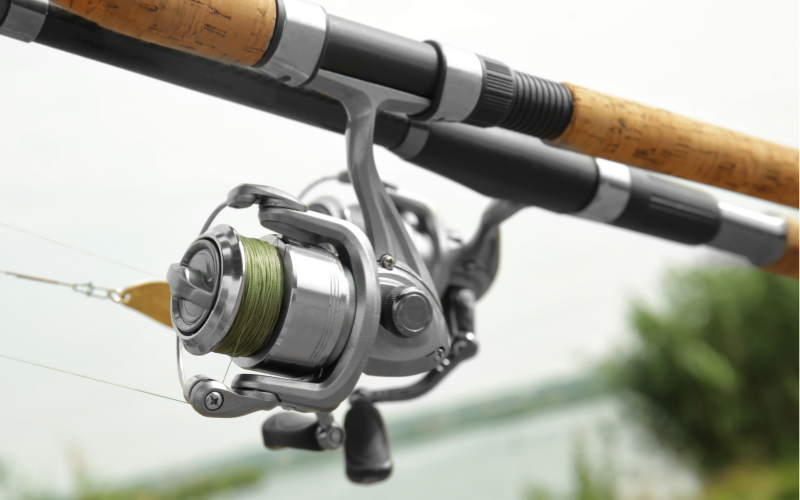
Cooler weather doesn’t mean heavy tackle — it means smart tackle.
1. Rods & Reels
-
Medium-light spinning rods let you throw mirrolures, soft plastics, and small jigs with finesse.
-
2500–3000 class reels balance perfectly for long casts when fish are spooky in clear fall water.
2. Lines & Leaders
-
10–15 lb braid cuts through colder water cleanly.
-
Longer 20–25 lb fluorocarbon leader becomes essential because clearer water = smarter fish.
3. Lure Selection Changes
The old summer rules don’t apply.
Cooler water means:
-
Slow your retrieve. Fish get more methodical.
-
Match smaller bait profiles.
-
Use more natural colors — silvers, clears, pearl, root beer, electric chicken for trout.

Top picks:
-
MirrOlure MR17
-
Vudu shrimp
-
Soft plastics on 1/8–1/4 oz jigheads
-
Small gold spoons for reds
-
Z-Man paddletails (MinnowZ, DieZel MinnowZ)
Dress Like You Plan to Stay a While
Nothing ends a promising day on the water faster than cold hands, wet clothes, and wind cutting through layers.
Cold-Weather Essentials
-
A wind-blocking outer shell — the north wind can feel like a blade
-
Fingerless gloves for sensitivity
-
Waterproof deck boots
-
Beanie or buff to hold heat
-
Layers you can shed mid-day when the sun warms up
Cooler weather often means big tides and colder mornings, but the afternoons can still get unexpectedly warm. The key: dress in layers, not bulk.
The Creeks Become Highways

Fall and early winter turn coastal creeks into migration corridors.
Look for:
-
Deeper bends
-
Oyster edges
-
Grass points on a falling tide
-
Current seams
-
Bait that seems nervous or tight
If you find the bait, you’re in the right ZIP code.
If you find mullets stacked or shrimp skipping, don’t leave.
The Tide Becomes More Important Than the Clock
Cooler weather sharpens the effect of tides. A strong falling tide that drains the grass can be absolute magic.
The winning formula:
cool morning + dropping tide + clear water = guaranteed action
Trout love ambush points.
Reds feed aggressively on exposed oyster bars.
Flounder sit tight on drop-offs waiting for an easy meal.
When you time the tides right, you won’t remember what the actual time of day was.
Don’t Forget the Live Bait
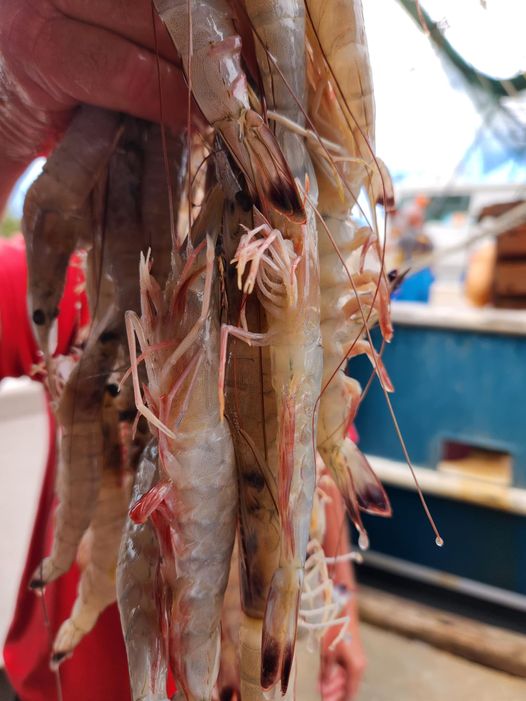
Even lure purists admit it — when the water cools, live bait becomes deadly.
-
Mud minnows stay hardy and irresistible
-
Finger mullet remain prime redfish candy
-
Live shrimp, when you can find them, are pure gold for trout
Winter live bait rigs:
-
Slip cork rigs
-
Carolina rigs
-
Jighead + minnow on the bottom
-
Popping cork (still works into November)
Electronics Matter More Than Summer
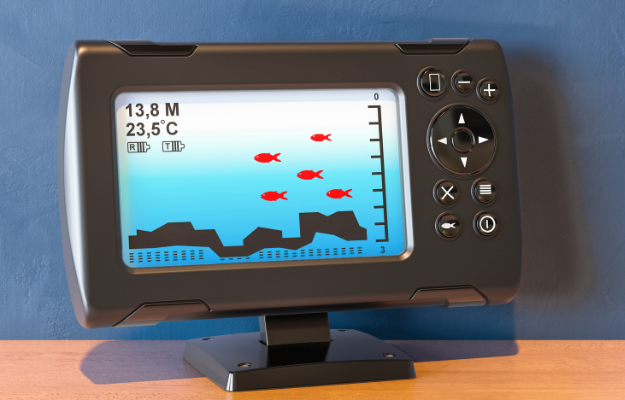
Clearer water + schooling fish = the perfect combo for good electronics.
Cooler weather means:
-
Deeper fish
-
Tighter bait clusters
-
Stronger structure patterns
Finding that bait ball in 10–15 feet of water can be the difference between a slow day and a story you’ll tell later.
Why We Love This Season
Cooler weather does something to an inshore fisherman.
The mornings bite a little harder.
The marsh quiets down.
There’s no jet ski wake rolling through your drift.
Just you, the tide, and fish that came to feed.
This is the season where the Carolina coast shows its true beauty — not loud, not crowded, just honest.
It rewards patience.
It rewards preparation.
And it rewards the angler who knows that the best fishing of the year doesn’t happen under the summer sun…
It happens when the air turns crisp.
Story By: Angler & Sportsman Team
You may be interested
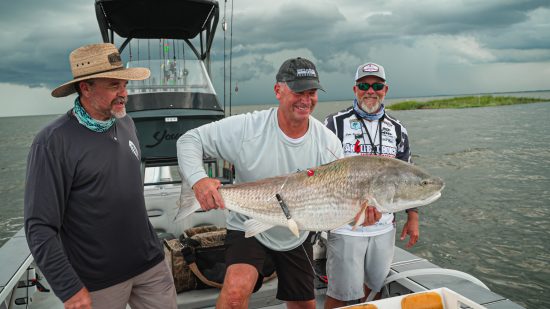
New Red Drum Satellite Tracking Platform Officially Launches
Tim Wilson - November 16, 2025Interactive tool blends science and technology to reveal migration habits of NC’s iconic state saltwater fish RALEIGH, NC – Today, the North Carolina Marine & Estuary Foundation…
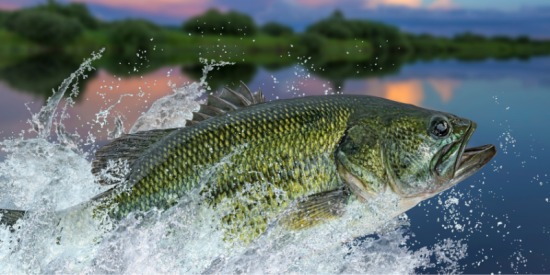
Winter Waters: The Top 10 Carolina Lakes Where the Bite Never Sleeps
Tim Wilson - November 16, 2025Winter settles over the Carolinas in a quiet, steady way. Mornings come with a thin frost on the ramp, the sun takes its time rising, and out…

A Carolina Deer Hunter’s Quiet Lesson In Becoming Invisible
Tim Wilson - November 16, 2025I learned a long time ago that a whitetail doesn’t care about what name is stitched on your jacket or how new your boots look. A deer…


